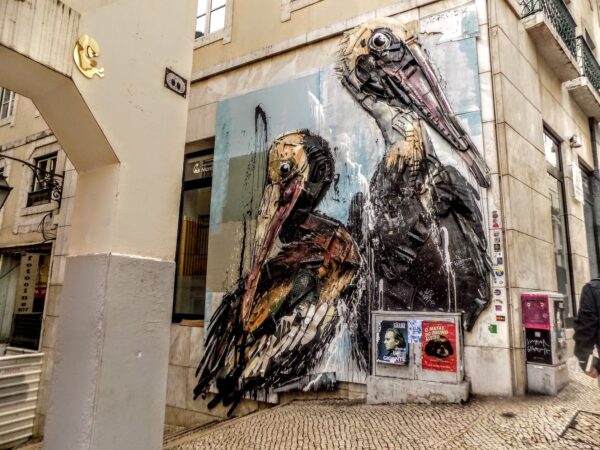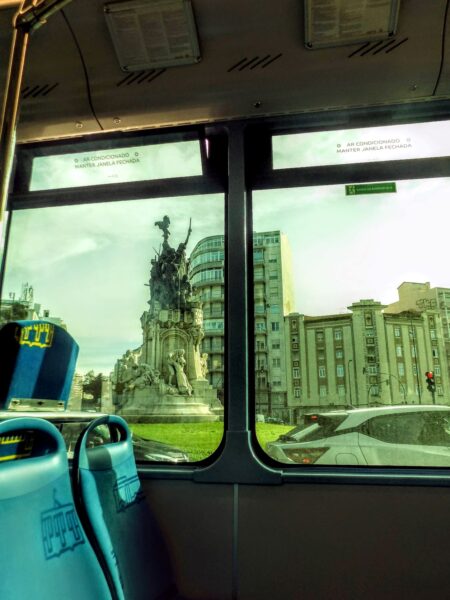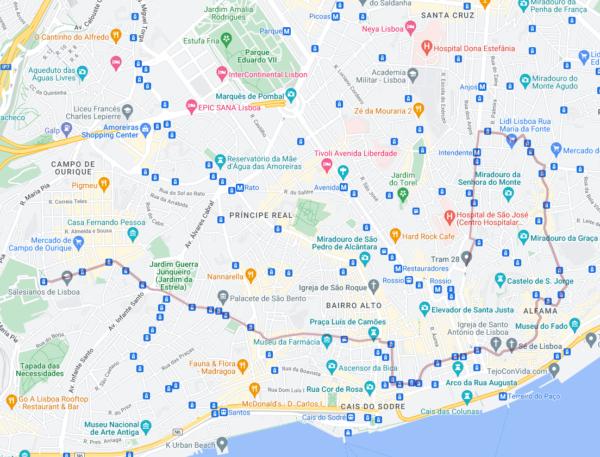Who knows where the time goes?
Since the previous post ended with me returning to the flat after my New Year’s Eve excitement Saturday night, you might reasonably wonder what happened to Sunday. I’ll tell you. Sunday was a washout. The unrevealed truth is that while I heard revelers in the streets until the wee hours of the morning, the unexpected long walk home had me so wired that I didn’t make any effort to fall asleep until 03:00.
I managed to sleep until about 09:30 and, while I was brewing my morning tea, looked at the rather threatening weather forecast predicting prolonged and heavy rain to begin sometime after noon. With that in mind, I passed temporarily on the tea and set out for a long morning walk. It’s my habit to try to walk at least 10 km every day but I usually break that into two or three shorter walks. As is turned out, I only had to walk seven or eight kilometers that day because the post-fireworks detour that had aggravated me while I was trekking it had given me a roughly 3 km head start toward my goal.
I will say that the number of open shops and restaurants surprised me. I’d expected most places would be closed since it was both Sunday and New Year’s Day.
This is one of the five photos I managed on this walk

and you can see the other four here.
The downpour began soon after I returned to the apartment and I dropped into bed for what I planned to be a 20 minute nap. It turned into an hour and a half. If the rain abated during that time, I couldn’t tell when I awoke because it continued falling in the proverbial buckets. I spent the rest of the day inside reading, web surfing, eating leftovers, and went to bed certain things would be better come Monday.
Bus stop, bus goes; Clang clang clang.
No matter what people might think of this idea, I had a rather odd plan in mind for Monday’s principal activity that involved the numbers 727 and 28. The former is a bus and the latter a streetcar (or tram). My reasons will shortly become clear.
I had a light breakfast and half my usual morning tea because I planned to start the day with a 4-and-a-half kilometer walk followed by an hour long bus ride and another walk of, as yet, an undetermined length. I hoped to reach the bus stop after rush hour but early enough in the day to allow the time I thought I’d need to do everything I wanted. The walk itself served a dual purpose. First, the distance was a good start toward my daily goal. Second, it necessitated walking through a previously unexplored part of the city and that’s always a debit in my ledger.
Here’s how Nuno Lopes de Paula describes the 727 bus ride on Spotted By Locals:
It’s a very long trip, but totally worth it, as it will show you the real city. Starting at Alvalade (Roma Avenue) it will go down to the heart of town passing some iconic buildings like the Campo Pequeno Bullring, Picoas and Saldanha neighbourhoods (the so-called “Avenidas Novas” or “The New Avenues”), Marques de Pombal, Rato, the beautiful São Bento Street and the Parliament Building, up through the rich Lapa neighbourhood and down by the river passing in Santos, Alcântara (Lx Factory) before reaching Belem and Restelo.
His description intrigued me because while I’d quite deliberately chosen to stay in a part of the city frequented by tourists, I also wanted to see less visited parts of the city. I boarded the bus at one end of its route outside the Roma-Areeiro Station and rode it to just two stops short of its other terminus. Sadly, I didn’t find it quite as revealing or charming as Nuno. I snapped a few photos through the windows including this rather unusual looking monument.

Another Day, Another Miradouro.
Disappointment wasn’t the only reason I didn’t stay on the bus to the end. I wanted to climb to the Miradouro dos Montes Claros. Had I remained on the bus to the end of the line, I’d have had to walk considerably farther that the 1,400 meters projected by the Organic Maps app. (On a normal day, I’d have high praise for the route projected by this app because it took me through a park and up and unpaved path that considerably shortened the distance. However, following yesterday’s heavy rain, the muddy uphill trek was a bit more slippery and potentially treacherous than I would have liked. Still, once there, I did get a peek at not only the mouth of the Tejo but the ocean beyond.)

As I noted in a previous post, Lisboa has many small green spaces but people feel the pull of the light that permeates the city and gravitate to the many miradouros or viewpoints on its seven or eight hills. Rather than overlooking the old central part of the city, from the Miradouro dos Montes Claros one sees Lisboa rather differently, if perhaps not as charmingly, as, say, from Graça. Combine this with its relatively isolated location and it’s a viewpoint that almost assures a degree of quietude and time to breathe. For the first time in awhile, this viewpoint also brought an appearance of testudines:.

The viewpoint isn’t far from (and may be a part of) Lisbon’s largest park the Parque Florestal de Monsanto and I had, at one time, thought that its proximity might provide an opportunity to also visit the Panorâmico de Monsanto that’s supposed to provide some of the most stunning views of Lisboa. However, it was a nearly 5 km walk or nearly a circuitous hour on two buses that still required a walk of some substantial length to find that particular viewpoint.
Instead, I took a short 700 meter walk to catch the 742 bus to ride to the Cemitério de Prazeres. I love cemeteries but I’d visited Prazeres in the spring and didn’t intend to spend time there on this day. Rather, my plan was to take a ride on probably the most famous trolley in Lisboa,
Tram 28.
Open your web browser to your favorite search engine and enter the search term “Tram 28 Lisbon”. You’ll likely get as far as “tram 28” and the search engine will generate Lisbon. The breadth of the results will almost certainly surprise you. Tram 28, which National Geographic magazine includes on its list of top 10 trolley rides in the world, seems to be one of those di rigueur activities for anyone who visits Lisboa. This edited screen capture of its route map from seewah.com hints at the reason. (I’ve also ridden on another tram on that list, Budapest’s Number 2.)

Look closely and you’ll see both sights and neighborhoods that might be familiar: The neighborhoods of Bairro Alto, Cais do Sodré, and Alfama. The Museu da Farmacía, the Praça Luis de Camões, and the Castelo de São Jorge among others. True, there’s no guide but the upside is that with a little planning, this tram ride becomes a much less expensive alternative to a Hop-on Hop-off bus tour. (A 24 hour transit pass costs €6.90 including the initial reloadable card purchase. The Hop-on Hop-off passes cost between 22 and 50 euros.) The downside is that this tram is so famous, it’s almost always jam packed and usually with tourists. Boarding at the Prazeres terminus allowed me to sit rather than stand for the roughly 50 minutes it took to reach the other end at Martím Moniz. (In fact, the 28 has a stop in Baixa on the Rua da Conçeicão just a few blocks from my VRBO flat but it’s almost always crowded at that point.)
Although you might not see all of the building exteriors while riding the tram, you can get a general feel for the character of the neighborhoods of Lisboa and you will certainly get a sense of the city’s hills without having to navigate them on foot.
After leaving the tram at Martím Moniz and having already covered a lot of ground on foot, I walked back toward Baixa at a relatively leisurely pace (though still faster than most pedestrians) and stopped at Ginjinha Sem Rival for an afternoon bracer.
The remainder of the day was quiet and uneventful so I’ll allow you some rest as well. Tomorrow, I’ll have an encounter that will not only complete the lesson that began New Year’s morning but I’ll begin to try to internalize it as well.
Until then, here are the rest of the day’s photos.